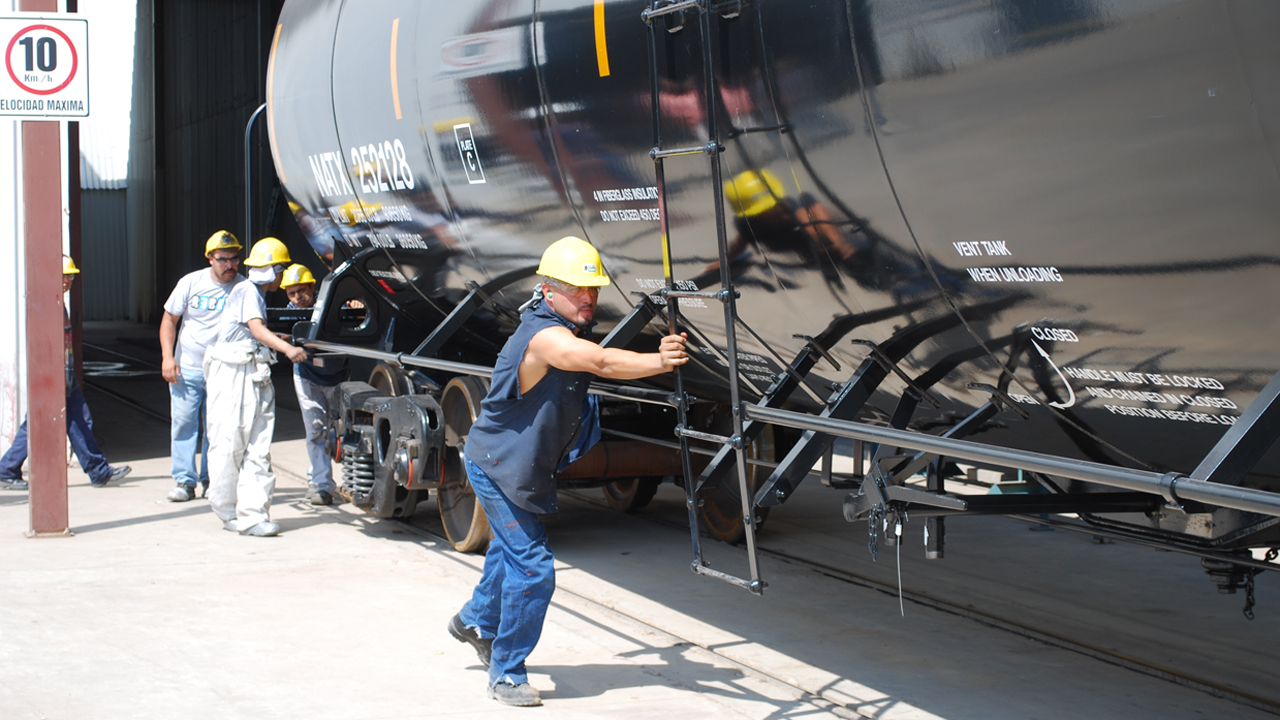
SIG Takeaways From REF 2024
Written by Marybeth Luczak, Executive Editor
A finished tank car emerges from Greenbrier’s Concarril assembly plant in Sahagún, Mexico. (William C. Vantuono Photograph)
Conversations at the Rail Equipment Finance Conference 2024 (REF), held March 3-6, “suggest favorable railcar leasing fundamentals should continue at least through 2024 and that new railcar orders should recover from fourth-quarter 2023’s disappointing levels,” reports Bascome Majors, Senior Equity Research Analyst-Industrials at Susquehanna International Group (SIG).
Majors offers these takeaways in a SIG report, after spending time with railcar lessors, builders, other railcar buyers, consultants, and market participants at the La Quinta, Calif., event:
- Railcar leasing fundamentals “remain in the sweet spot.” Many operating lessors of all sizes and market focuses that SIG spoke with “were consistently constructive on the railcar market,” according to Majors. Simply put, he reports, “lease rate renewals remain considerably higher vs. expired, and lease rate factors (relative to asset prices) are sufficient to support fleet investment even at today’s elevated new car prices.” Importantly, he notes, “this is happening without meaningful underlying rail volume growth, and railcar investors don’t believe a successful ‘pivot to growth’ is needed for this favorable railcar investment backdrop to continue.” On the leasing side, private lessors said their renewal rate experiences “were generally consistent with GATX’s and Trinity Industries’ recent approximately 25% to approximately 35% markups,” Majors reports. “By car type, most positive mentions came in freight cars, but we did hear slight sequential optimism on still lagging tank cars.”
- Secondary market “still humming.” According to Majors, SIG spoke with many contacts at lessors, industrial shippers, consultancies, and other financing companies, and “not a single one reported emerging cracks in the depth or valuations of leased railcars sold into the secondary market.” While it’s early in 2024 and “the more meaningful activity won’t start until the second quarter when lessors become more active in putting up books for sale,” he says, “we simply don’t see signs of a mean reversion in railcar secondary market activity today and believe there’s more upside risk than downside risk to publicly traded lessors’ gains on railcar sales relative to their initial full-year outlooks issued in January and February.”
- New car inquiries “better than recent orders, but we want to see more here.” Fourth-quarter 2023 railcar orders “were the worst since 2009,” Majors reports. That’s the bad news. The good news, he says, “is that both private and public builders we spoke to this week are adamant that inquiry levels have improved and optimistic that firm orders will improve and continue to support production approaching replacement rates (similar to Original Equipment Manufacturer guides). We’re very much encouraged by the reports on improving inquiry levels, though we’re less satisfied with the reasons given for customers’ order hesitancy in the fourth quarter (‘high steel prices, macro uncertainty, relatively long lead times’).” According to Majors, SIG is “willing to take the optimistic side on railcar orders improving as long as rail volumes don’t collapse, but want[s] to see firm evidence of this in firm orders in first quarter-second quarter 2024.”
Major notes that SIG remains a buyer of Trinity Industries and The Greenbrier Companies, and views its “checks as favorable for Neutral-rated GATX.”
Further Reading:
REF 2024: Rail Equipment Close to Equilibrium; Structural Shifts May Emerge



